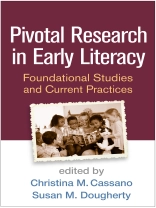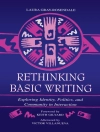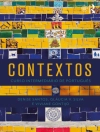This reader-friendly text examines the key foundational studies in early literacy. It addresses such essential questions as how research informs current practices and where the field still needs to go to provide the best learning opportunities for all children. Each chapter describes the methods and findings of seminal studies, critically assesses their long-term impact on practice and policy, and offers takeaways for the classroom. Leading authorities–including several authors of the original pivotal studies–cover 12 essential aspects of language development, literacy development, and home and community literacy experiences in Pre K–2.
Зміст
Introduction, Susan M. Dougherty and Christina M. Cassano
I. Early Language Development
1. Now You’re Talking: Vocabulary Development in the Home Context, Lillian R. Masek, Molly E. Scott, Rebecca Dore, Rufan Luo, Kathy Hirsh-Pasek, and Roberta Michnick Golinkoff
Pivotal studies discussed:
– Hart and Risley (1995). Meaningful Differences in the Everyday Experience of Young American Children
– Pan, Rowe, Singer, and Snow (2005). Maternal Correlates of Growth in Toddler Vocabulary Production in Low‐Income Families
– Tomasello and Farrar (1986). Joint Attention and Early Language
2. Pivotal Theory and Research Affecting Emergent Bilingual Children’s Language and Literacy Achievement, Theresa A. Roberts
Pivotal studies discussed:
– Cummins (1979). Linguistic Interdependence and the Educational Development of Bilingual Children
– Dulay and Burt (1974). Errors and Strategies in Child Second Language Acquisition
– Hoover and Gough (1990). The Simple View of Reading
– Krashen (1982). Principles and Practice in Second Language Acquisition
– Willig (1985). A Meta-Analysis of Selected Studies on the Effectiveness of Bilingual Education
II. Literacy Development in the Early Years
3. Writing in the Early Years, Judith A. Schickedanz
Pivotal studies discussed:
– Durkin (1966). Children Who Read Early: Two Longitudinal Studies
– Hildreth (1936). Developmental Sequences in Name Writing
– Read (1975). Children’s Categorization of Speech Sounds in English
4. Reconceptualizing Alphabet Learning and Instruction, Marcia Invernizzi and Jordan Buckrop
Pivotal studies discussed:
– Mason (1980). When Do Children Begin to Read?: An Exploration of Four Year Old Children’s Letter and Word Reading Competencies
– Treiman and Broderick (1998). What’s in a Name: Children’s Knowledge about the Letters in Their Own Names
– Treiman, Tincoff, Rodriguez, Mouzaki, and Francis (1998). The Foundations of Literacy: Learning the Sounds of Letters
5. A Close and Careful Look at Phonological Awareness, Christina M. Cassano
Pivotal studies discussed:
– Juel (1988). Learning to Read and Write: A Longitudinal Study of 54 Children from First through Fourth Grades
– Liberman, Shankweiler, Fischer, and Carter (1974). Explicit Syllable and Phoneme Segmentation in the Young Child
– Lundberg, Frost, and Petersen (1988). Effects of an Extensive Program for Stimulating Phonological Awareness in Preschool Children
6. The Role of Word Recognition in Beginning Reading: Getting the Words off the Page, Ruth M. Wharton-Mc Donald
Pivotal studies discussed:
– Adams (1990). Beginning to Read: Learning and Thinking about Print
– Share (1995). Phonological Recoding and Self-Teaching: Sine Qua Non of Reading Acquisition
– Stanovich (1980). Toward an Interactive-Compensatory Model of Individual Differences in the Development of Reading Fluency
7. Engagement, Motivation, Self-Regulation, and Literacy Development in Early Childhood, Alisa Hindin
Pivotal studies discussed:
– Blair (2002). School Readiness: Integrating Cognition and Emotion in a Neurobiological Conceptualization of Children’s Functioning at School Entry
– Guthrie and Wigfield (2000). Engagement and Motivation in Reading
– Spira, Bracken, and Fischel (2005). Predicting Improvement after First-Grade Reading Difficulties: The Effects of Oral Language, Emergent Literacy, and Behavior Skills
III. Home and Community Literacy Experiences of Children
8. Starting Them Young: How the Shift from Reading Readiness to Emergent Literacy Has Influenced Preschool Literacy Education, William H. Teale, Emily Brown Hoffman, Colleen E. Whittingham, and Kathleen A. Paciga
Pivotal studies discussed:
– Almy (1949). Children’s experiences prior to first grade and success in beginning reading
– Teale and Sulzby (1986). Emergent Literacy: Writing and Reading
9. Pivotal Research in Storybook Reading, Molly F. Collins
Pivotal studies discussed:
– Cochran-Smith (1984). The Making of a Reader
– Dickinson and Smith (1994). Long-Term Effects of Preschool Teachers’ Book Readings on Low-Income Children’s Vocabulary and Story Comprehension
– Whitehurst, Falco, Lonigan, Fischel, De Baryshe, Valdez-Menchaca, and Caulfield (1988). Accelerating Language Development through Picture Book Reading
10. The Impact of Pivotal Research on the Role of Play in Early Literacy Development, Muriel K. Rand and Lesley Mandel Morrow
Pivotal studies discussed:
– Morrow and Rand (1991). Promoting Literacy During Play by Designing Early Childhood Classroom Environments
– Neuman and Roskos (1990). Play, Print, and Purpose: Enriching Play Environments for Literacy Development
– Pellegrini (1985). The Relations Between Symbolic Play and Literate Behavior: A Review and Critique of the Empirical Literature
11. Family Literacy: Is It Really All About Storybook Reading?, Susan M. Dougherty and Jeanne R. Paratore
Pivotal studies discussed:
– Bus, van IJzendoorn, and Pellegrini (1995). Joint Book Reading Makes for Success in Learning to Read: A Meta-analysis on Intergenerational Transmission of Literacy
– Heath (1983). Ways with Words: Language, Life and Work in Communities and Classrooms
– Purcell‐Gates (1996). Stories, Coupons, and the “TV Guide”: Relationships between Home Literacy Experiences and Emergent Literacy Knowledge
– Scarborough and Dobrich (1994). On the Efficacy of Reading to Preschoolers
– Sénéchal, Lefevre, Thomas, and Daley (1998). Differential Effects of Home Literacy Experiences on the Development of Oral and Written Language
12. Enhancing Children’s Access to Print, Susan B. Neuman and Donna Celano
Pivotal study discussed:
– Neuman and Celano (2001). Access to Print in Low-Income and Middle-Income Communities: An Ecological Study of Four Neighborhoods
Afterword: Pivotal Research in Early Literacy: Lessons Learned and a Call to Action, Heidi Anne E. Mesmer and Melissa Rose-Mc Cully
Index
Про автора
Christina M. Cassano, Ed D, is Associate Professor of Childhood Education and Care at Salem State University in Massachusetts, where she teaches graduate and undergraduate courses in early literacy and language development, reading foundations, and child development, and provides professional development on language and literacy for preschool teachers. A former kindergarten teacher and literacy specialist, she is the current president of the Literacy Development in Young Children special interest group of the International Literacy Association. Dr. Cassano’s research interests include the study and support of vocabulary and concept knowledge in preschoolers, using science–literacy interventions in Head Start, and examining the relationship between vocabulary and phonological awareness. She has coauthored several publications on early literacy development and research.
Susan M. Dougherty, Ed D, is Associate Professor of Literacy Education in the College of Education and Human Services at Rider University in Lawrenceville, New Jersey. She teaches undergraduate and graduate courses in literacy and has a particular interest in preparing preservice and future literacy specialists to support children who find literacy learning difficult. Dr. Dougherty began her career in education as an elementary teacher in New Jersey and is currently on the board of the New Jersey Literacy Association. Her research interests include parent–preschooler talk, family literacy, and early literacy and science learning. She has published articles and book chapters in these areas and coauthored the book Engaging Readers: Supporting All Students in Knowledge-Driven Instruction, 4–8.












